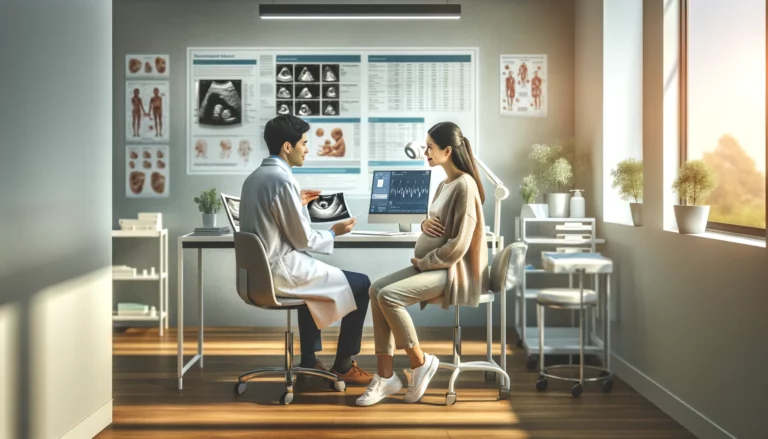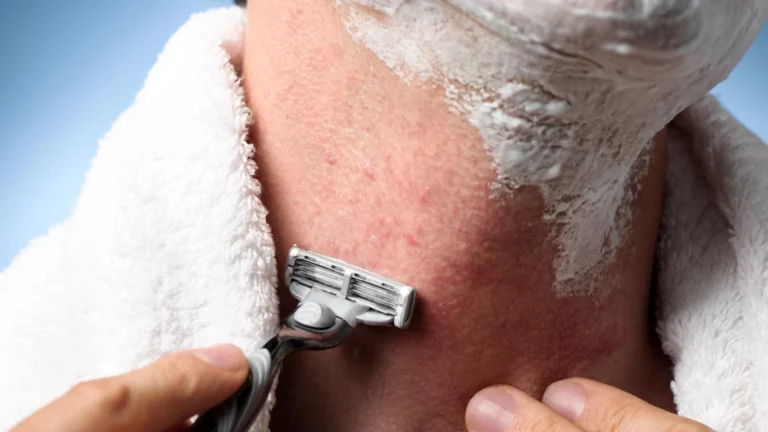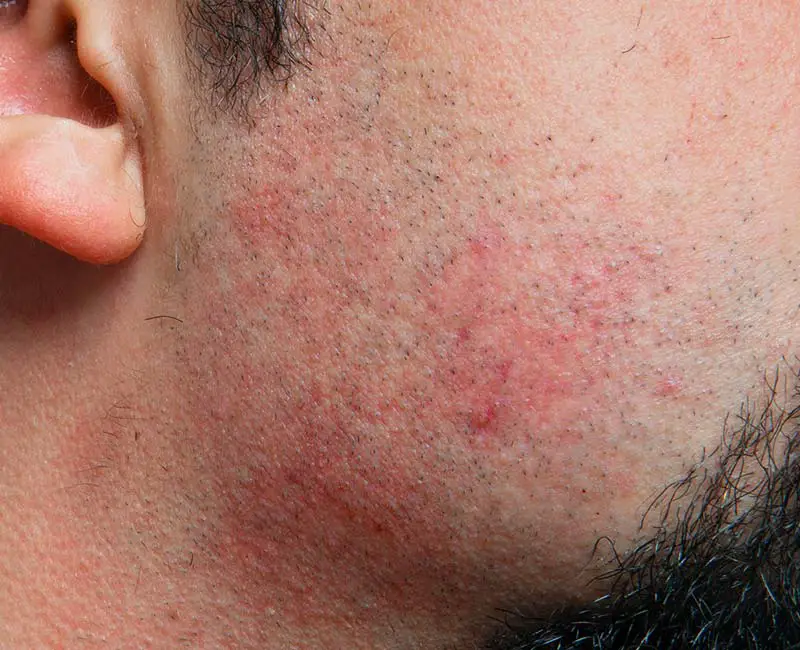Feeling discomfort in your lower abdominal area? You’re not alone. Many individuals experience issues related to their lower abdomen, which can be both concerning and disruptive. In this post, we’ll delve into the common causes of lower abdominal discomfort, from digestive problems to reproductive health issues. We’ll also explore practical tips for alleviating these woes and when it’s crucial to seek medical attention.
Understanding what triggers lower abdominal distress is vital for taking proactive steps towards a healthier lifestyle. Whether it’s addressing dietary habits or recognizing symptoms that warrant a visit to the doctor, being informed empowers you to make well-informed decisions about your well-being. Let’s uncover the root causes of lower abdominal discomfort, including twisted bowel and cystitis, and equip ourselves with knowledge on how to address them effectively.
Key Takeaways
- Understanding the location and characteristics of lower abdominal pain can help in identifying potential causes and seeking appropriate medical attention.
- Diagnosing the pain through medical evaluation, including physical examination and possibly imaging tests, is crucial for determining the underlying cause of lower abdominal discomfort.
- Recognizing common conditions such as urinary tract infections, menstrual cramps, and digestive issues can aid in understanding the potential sources of lower abdominal pain.
- Differentiating between types of lower abdominal pain, such as cramping, sharp, or dull pain, can guide the selection of appropriate treatments and management strategies.
- Implementing home remedies and self-care measures, such as staying hydrated, maintaining a healthy diet, and managing stress, can help alleviate lower abdominal discomfort and promote overall well-being.
- Being mindful of bloating and its potential causes, such as dietary factors or underlying health conditions, can inform individuals about effective ways to address and manage bloating.
Understanding Lower Abdominal Pain
Common Causes
Lower abdominal pain can stem from various sources, including inflammation in the abdominal area, digestive system disorders, muscle strain or injury, reproductive system issues, and urinary tract problems. Inflammation in this region may be caused by conditions such as appendicitis or diverticulitis. Digestive system disorders like irritable bowel syndrome (IBS) or inflammatory bowel disease (IBD) can also lead to discomfort in the lower abdomen.
Activities that involve heavy lifting or sudden movements can result in lower abdominal pain in people. Reproductive system issues such as ovarian cysts or endometriosis are common causes of discomfort for females. urinary tract problems like urinary tract infections (UTIs) can also manifest as pain in the lower abdomen.
In some cases, people may experience a combination of these factors leading to more complex symptoms.
Symptoms Overview
The symptoms associated with lower abdominal pain vary depending on the underlying cause. Bloating and discomfort are common complaints among individuals experiencing this type of pain. Changes in bowel habits such as diarrhea or constipation may also occur due to digestive system issues like IBS.
Pain during urination is often indicative of a urinary tract problem while menstrual irregularities could point towards reproductive health concerns for females. Nausea and vomiting might accompany severe cases of lower abdominal pain caused by conditions like appendicitis.
Understanding these symptoms is crucial for identifying potential causes and seeking appropriate medical attention when necessary for people.
Severity Indicators
It’s important to recognize certain indicators that suggest a more serious issue requiring immediate medical intervention when experiencing lower abdominal pain. Persistent and intense pain that does not subside with time should raise concern about potential complications related to inflammation, organ damage, or infection within the abdomen. Fever and chills accompanying lower abdominal pain could indicate an underlying infection that needs prompt treatment. Unexplained weight loss alongside persistent discomfort requires thorough evaluation by a healthcare professional to rule out any serious conditions such as cancer. Severe bloating and distension along with difficulty breathing signal possible complications affecting organs within the abdomen which require urgent medical assessment.
Diagnosing the Pain
Professional Diagnosis
When experiencing lower abdominal pain, seeking a professional diagnosis is crucial. A healthcare provider will conduct a physical examination to assess the location and severity of the pain. They may recommend imaging tests such as ultrasound or CT scan to identify any abnormalities in the abdominal region. Blood and urine tests are also common to check for signs of infection or inflammation that could be causing the pain.
It’s important not to underestimate the value of seeking medical help when dealing with lower abdominal pain. While self-assessment can provide some insight, professional diagnosis offers a comprehensive understanding of the underlying causes.
Location-Specific Causes
The location of lower abdominal pain can often point towards specific causes that need attention and possible treatment options.
Right Quadrant
Pain in the lower right quadrant could indicate appendicitis, especially if it starts as mild discomfort around your belly button before moving to your lower right abdomen. Gallbladder issues such as gallstones or inflammation might also cause severe discomfort in this area. Liver conditions like hepatitis or liver abscesses can result in persistent pain on this side.
Left Quadrant
On the other hand, left-sided lower abdominal pain might signify diverticulitis – an inflammation or infection within small pouches that develop along your colon’s walls. Spleen-related concerns due to trauma or infections could also lead to sharp pains on this side. Colon problems including irritable bowel syndrome (IBS) or colitis may manifest through consistent discomfort in this area.
Understanding these potential causes based on location helps individuals recognize when it’s time to seek medical assistance for their symptoms instead of ignoring them until they worsen.
Self-Assessment Tips
In addition to seeking professional guidance, there are steps individuals can take for self-assessment when experiencing lower abdominal pain:
- Keeping a symptom journal: This involves noting down details about when and where you experience pain, its intensity, duration, and any accompanying symptoms.
- Monitoring dietary triggers: Certain foods may exacerbate digestive issues leading to lower abdomen discomfort; keeping track of what you eat can help identify potential triggers.
- Tracking menstrual cycles (for females): For women experiencing cyclical lower abdomen distress related to menstruation, tracking monthly cycles provides valuable insights into patterns and fluctuations.
Common Conditions and Causes
Digestive Issues
The lower abdominal region can be affected by various digestive issues. Constipation is a common problem that causes infrequent bowel movements, leading to straining during bowel movements and the passing of hard or lumpy stools. This can result in discomfort and pressure in the lower abdomen.
Another condition related to digestive issues is Irritable Bowel Syndrome (IBS), which often leads to lower abdominal discomfort. IBS may cause abdominal pain accompanied by diarrhea or constipation, along with bloating, gas, and the presence of mucus in the stool.
These conditions can lead to significant discomfort in the lower abdomen due to irregular bowel movements and the associated symptoms such as pain, bloating, and gas.
Inflammation Causes
Inflammation-related conditions also contribute to lower abdominal discomfort. One such condition is colitis, characterized by diarrhea containing blood or pus, along with severe abdominal cramps and pain. Individuals experiencing colitis may also feel an urgent need for a bowel movement due to inflammation in the colon.
Appendicitis is another inflammation-related issue that affects the lower abdomen. It typically starts with sudden pain near the navel before moving towards the right side of the lower abdomen. Other symptoms include loss of appetite, nausea, vomiting – all contributing to significant discomfort in this area.
These inflammatory conditions not only cause physical distress but also impact daily activities due to their severity.
Reproductive Cycle Factors
Factors related to an individual’s reproductive cycle can significantly impact their experience of lower abdominal discomfort. Menstrual cramps are a common occurrence among individuals who menstruate; these cramps occur specifically within this region during menstruation causing varying levels of distress.
Additionally,right upper quadrant pain might affect women more than men because it could be related directly or indirectly through pregnancy complications.
Location-Specific Abdominal Pain
Right Upper Quadrant Pain
Lower abdominal pain is often localized to specific areas, such as the right upper quadrant. This type of pain can be caused by conditions related to the gallbladder, liver, or right kidney. When experiencing lower abdominal pain in the right upper quadrant, it’s important to consider potential causes such as gallstones, hepatitis, or a kidney infection.
Pain in the lower abdomen on the right side may also indicate issues with the liver. For instance, liver inflammation (hepatitis) or a blocked bile duct can lead to discomfort in this area. It’s crucial to seek medical attention if you experience persistent or severe stomach pain, especially when accompanied by other symptoms like jaundice (yellowing of skin and eyes), fever, or nausea.
In some cases, abdominal pain in the right upper quadrant might be linked to musculoskeletal issues rather than internal organ problems. Strained muscles or costochondritis (inflammation of cartilage connecting ribs and breastbone) can cause localized discomfort that mimics internal organ-related pains.
Left Lower Quadrant Pain
When discussing lower abdominal pain, focusing on the left lower quadrant is essential for identifying potential causes related to structures like the colon and ovaries. Conditions such as diverticulitis (inflammation of small pouches in the colon), ulcerative colitis, and ovarian cysts are known culprits for causing discomfort in this region.
Diverticulitis occurs when pouches lining your intestines become inflamed due to trapped stool particles; this condition commonly leads to sharp pains on your left side along with bloating and changes in bowel habits. Furthermore, ovarian cysts are fluid-filled sacs that form within an ovary; they can trigger dull aches concentrated on one side of your lower abdomen.
Pelvic vs. Abdominal Pain
Distinguishing between pelvic and abdominal pain is crucial since they originate from different anatomical regions despite their proximity. Pelvic pain typically arises from reproductive organs—such as uterus and ovaries—and surrounding structures like fallopian tubes. On contrary, abdominal discomfort encompasses a broader range including gastrointestinal organs—like stomach and intestines—as well as other vital structures within your belly cavity.
By understanding these distinctions, you’ll be better equipped at pinpointing potential sources behind any lower abdominal distress you might encounter.
Types and Treatments of Lower Abdominal Pain
Acute vs. Chronic Pain
Lower abdominal pain can be categorized into acute or chronic based on the duration and severity of the discomfort. Acute pain is often sudden and intense, caused by a specific injury or illness such as appendicitis or kidney stones. It typically requires immediate medical attention to address the underlying cause and alleviate the symptoms. On the other hand, chronic lower abdominal pain persists over a longer period, usually more than three months, and may be indicative of an ongoing issue such as irritable bowel syndrome (IBS) or endometriosis.
When experiencing acute lower abdominal pain, seeking prompt medical evaluation is crucial to diagnose any serious conditions that require urgent intervention. For example, if someone develops severe lower abdominal pain accompanied by fever and vomiting, it could be a sign of appendicitis requiring surgical removal of the inflamed appendix.
In contrast, chronic lower abdominal pain often necessitates a comprehensive assessment to identify its root cause before initiating targeted treatment. For instance, individuals with chronic pelvic inflammatory disease might need long-term antibiotic therapy alongside lifestyle modifications to manage their symptoms effectively.
Understanding whether the lower abdominal pain is acute or chronic plays a pivotal role in determining appropriate courses of action for alleviating discomfort and addressing potential underlying health issues.
Medications and Therapies
The management of lower abdominal pain frequently involves various medications and therapeutic approaches tailored to each patient’s specific condition. Over-the-counter medications like acetaminophen (Tylenol) can help relieve mild lower abdominal discomfort resulting from menstrual cramps or muscle strain.
Prescription medications are also commonly used for treating different causes of lower abdominal pain; for example:
- Antibiotics are prescribed for bacterial infections causing pelvic inflammatory disease.
- Antispasmodic drugs may be recommended for individuals with IBS-related lower abdominal cramping.
- Hormonal therapies are utilized in cases where gynecological conditions like endometriosis contribute to persistent pelvic discomfort.
Non-pharmacological interventions such as physical therapy exercises targeting core muscles can provide significant relief from chronic musculoskeletal causes of lower abdomen soreness. Similarly, relaxation techniques like deep breathing exercises or meditation might help reduce stress-induced gastrointestinal disturbances leading to recurrent stomach ache.
Surgical Interventions
In some instances where conservative treatments fail to adequately address severe or persistent sources of lower abdominal distress, surgical interventions become necessary options for resolving underlying anatomical abnormalities or eliminating pathological conditions contributing to debilitating symptoms:
- Appendectomy: Surgically removing an inflamed appendix due to appendicitis.
- Laparoscopic surgery: Minimally invasive procedures performed to diagnose and treat conditions affecting organs within the pelvis through small incisions. 3.Hysterectomy: Removal of uterus in cases involving severe uterine fibroids, endometriosis-associated complications, or certain types of gynecological cancers.
While surgical interventions carry inherent risks, such as infection or bleeding, they remain essential components in managing substantial sources of prolonged suffering stemming from diverse etiologies associated with lower abdominal agony.
Home Remedies and Self-Care
Lifestyle Modifications
Making certain lifestyle changes can significantly help alleviate lower abdominal pain. Firstly, maintaining a healthy diet is crucial. Eating a balanced diet rich in fiber can aid in preventing constipation, which often contributes to lower abdominal discomfort. Consuming plenty of water throughout the day helps keep the digestive system functioning smoothly.
Regular exercise also plays a pivotal role in managing lower abdominal pain. Engaging in physical activities such as walking, swimming, or yoga not only promotes better digestion but also reduces stress levels that could exacerbate abdominal discomfort.
Moreover, managing stress through relaxation techniques like deep breathing exercises or meditation can be beneficial for individuals experiencing lower abdominal pain due to high-stress levels. Stress management is essential as it can directly impact gastrointestinal health and contribute to symptoms such as bloating and cramping.
Natural Remedies
Several natural remedies have been found effective in alleviating lower abdominal pain without the need for medication. For instance, applying a warm compress to the affected area can provide relief by relaxing muscles and reducing tension. This simple remedy is particularly helpful for menstrual cramps or muscle strain causing the discomfort.
Furthermore, herbal teas containing ingredients like peppermint or ginger are known for their soothing properties on the digestive system and may help ease lower abdominal pain caused by gas or indigestion. These natural remedies offer gentle yet effective relief from common causes of lower abdominal discomfort.
In addition to this, aromatherapy using essential oils such as lavender or chamomile has shown promise in reducing overall body tension and promoting relaxation, potentially easing lower abdomen-related pains caused by muscular tension or stress.
Preventive Measures
Taking proactive steps to prevent recurrent episodes of lower abdominal pain is essential for long-term well-being. One key preventive measure involves being mindful of food triggers that may exacerbate symptoms; individuals should identify specific foods that tend to cause gastrointestinal distress and consider eliminating them from their diet.
Another vital preventive measure entails maintaining good posture during daily activities as poor posture can lead to muscle strain contributing to lower abdomen discomfort over time. Simple adjustments like sitting with proper back support and avoiding prolonged periods of slouching can make a significant difference.
Moreover, practicing good hygiene habits such as regular hand-washing before meals helps reduce the risk of ingesting harmful bacteria that could lead to stomach infections causing lower abdomen issues.
Treating and Managing Bloating
Dietary Adjustments
Making dietary adjustments can play a significant role in managing lower abdominal bloating. One of the most effective ways to reduce bloating is to avoid foods that are known to cause gas and discomfort. These include foods high in sodium, such as processed and canned goods, which can lead to water retention and bloating. Reducing intake of carbonated beverages like soda or beer can help minimize bloating. Instead, opt for hydrating with plain water or herbal teas.
Moreover, incorporating more fiber-rich foods into your diet can aid in digestion and prevent constipation, which often contributes to abdominal bloating. Foods such as fruits, vegetables, whole grains, nuts, and seeds are excellent sources of fiber that promote regular bowel movements and alleviate bloating symptoms. It’s essential to introduce these dietary changes gradually to allow your body time to adjust without causing additional discomfort.
Another important aspect of dietary adjustments involves paying attention to portion sizes during meals. Overeating can put extra pressure on the stomach and intestines, leading to increased bloating. Consuming smaller portions at regular intervals throughout the day rather than large meals can help prevent overloading the digestive system.
Over-the-Counter Solutions
In some cases where home remedies and dietary changes may not provide sufficient relief from lower abdominal bloating, individuals may consider utilizing over-the-counter solutions specifically designed for addressing gastrointestinal discomfort. For instance, taking digestive enzymes supplements before meals may assist in breaking down food more efficiently within the digestive tract.
Simethicone-based products are another popular option for alleviating gas-related symptoms associated with abdominal bloating by helping break up gas bubbles in the gut. Additionally, antacids containing ingredients like calcium carbonate or magnesium hydroxide may help neutralize stomach acid levels, reducing feelings of fullness or discomfort caused by excess gas accumulation.
It’s crucial for individuals considering over-the-counter solutions for managing lower abdominal bloating symptoms to consult a healthcare professional prior to using any new medications or supplements. This ensures that they are suitable based on individual health conditions and do not interact negatively with any existing medications being taken.
Addressing Specific Conditions
Kidney Infection Treatment
Kidney infections can cause lower abdominal pain and discomfort. It’s crucial to seek medical attention promptly if you suspect a kidney infection. The treatment typically involves a course of antibiotics prescribed by a healthcare professional. These medications are essential in eliminating the bacteria causing the infection, which can alleviate the symptoms, including lower abdominal pain.
In some cases, individuals with kidney infections may require hospitalization for intravenous antibiotics or further evaluation and management. It’s important to stay well-hydrated during treatment to support the body’s healing process. Drinking plenty of water helps flush out bacteria from the urinary system, aiding in recovery.
If left untreated, kidney infections can lead to more severe complications; therefore, seeking timely medical intervention is crucial when experiencing persistent lower abdominal discomfort associated with this condition.
Managing Trapped Gas
Trapped gas in the digestive system can result in uncomfortable sensations and lower abdominal bloating. To manage trapped gas effectively, various lifestyle adjustments and home remedies can be beneficial. Engaging in regular physical activity such as walking or gentle yoga exercises can help stimulate digestion and reduce gas buildup.
Moreover, consuming gas-relieving foods like peppermint tea or ginger may provide relief from trapped gas-related lower abdominal discomfort. Over-the-counter medications designed to alleviate gas symptoms could also be helpful when used according to their instructions.
Furthermore, practicing mindful eating habits such as chewing food slowly and avoiding carbonated beverages might aid in preventing excessive gas buildup within the digestive tract.
Relieving Constipation
Constipation often leads to straining during bowel movements and subsequent lower abdominal pain due to increased pressure on the intestines. To relieve constipation effectively, incorporating fiber-rich foods into one’s diet is key. Eating fruits like apples or pears along with vegetables such as broccoli or carrots promotes healthy digestion and softens stool consistency.
Additionally, staying adequately hydrated supports proper bowel function, helping prevent constipation-related lower abdominal discomfort. Regular physical activity also plays a significant role in promoting regular bowel movements, alleviating constipation symptoms.
Over-the-counter laxatives may offer short-term relief; however, it’s essential not to rely on them excessively without consulting a healthcare professional.
Special Considerations in Pain Management
Age is a crucial consideration. As people age, the body undergoes natural changes that can impact how pain is experienced and managed. Older adults may have a higher likelihood of experiencing lower abdominal pain due to conditions such as constipation, diverticulitis, or urinary tract infections.
Elderly individuals often experience reduced muscle mass and strength in the abdomen, which can contribute to discomfort or pain in the lower abdominal region. Age-related conditions like diverticular disease are more prevalent in older adults and can lead to persistent lower abdominal pain.
Furthermore, older adults may be taking multiple medications for various health issues. This polypharmacy can increase the risk of drug interactions or adverse effects leading to lower abdominal discomfort. Therefore, healthcare providers must consider these factors when developing a comprehensive plan for managing lower abdominal pain in elderly patients.
Chronic Conditions Impact
Chronic medical conditions play a significant role in lower abdominal pain management. For instance:
Diverticular disease is one of the common chronic conditions affecting the colon and causing lower abdominal discomfort. Individuals with this condition develop small bulges or pouches (diverticula) in their colon wall that can become inflamed or infected.
The presence of diverticula increases the risk of developing diverticulitis – an inflammation or infection of these pouches leading to severe tenderness and localized abdominal pain primarily on the left side but also across other areas.
When managing lower abdominal pain associated with diverticular disease, healthcare professionals need to focus on dietary modifications such as increasing fiber intake and avoiding certain foods like nuts and seeds that could exacerbate symptoms.
Nephrolithiasis refers to kidney stones which are solid deposits made up of minerals and salts that form inside your kidneys. These stones can cause excruciating intermittent spasms as they move through the urinary tract system.
In cases where nephrolithiasis causes referred pain, meaning it starts from one location then moves elsewhere (e.g., from back/flank area down towards groin), effective management involves addressing both acute episodes through medication for controlling spasm-induced agony while also focusing on long-term prevention strategies including increased fluid intake.
When to Seek Medical Attention
Warning Signs
If you experience persistent lower abdominal pain that doesn’t subside after a few days, it may be a warning sign of an underlying medical condition. Other warning signs include severe cramping, bloating, and discomfort during urination or bowel movements. If the pain is accompanied by abnormal vaginal bleeding or discharge, it’s crucial to seek medical attention promptly.
Ignoring these warning signs can lead to complications and delay proper diagnosis and treatment. If left untreated, conditions such as appendicitis, ovarian cysts, pelvic inflammatory disease (PID), or endometriosis can worsen and cause further damage to your reproductive system. Therefore, seeking prompt medical attention when experiencing any of these lower abdominal warning signs is essential for maintaining your overall health.
It’s important not to dismiss any unusual symptoms in the lower abdomen as they could indicate serious health issues that require immediate medical evaluation. Any sudden onset of severe pain in the lower abdomen should never be ignored because it might signify a life-threatening emergency.
Emergency Symptoms
Certain symptoms related to lower abdominal pain warrant immediate emergency care. These include sharp and intense pain that suddenly develops in the lower abdomen without an apparent cause or fluctuates in intensity rapidly. This kind of excruciating pain may signal an emergency situation such as an ectopic pregnancy or a ruptured organ like the appendix.
If you experience accompanying symptoms such as dizziness, fainting spells, profuse sweating with cold clammy skin, rapid heartbeat or difficulty breathing along with severe lower abdominal pain; don’t hesitate – seek urgent medical help right away.
Furthermore,
- Severe trauma to the lower abdomen from accidents or falls necessitates immediate assessment at an emergency room.
- Sudden onset of extreme tenderness in the lower abdomen upon touch should also prompt seeking urgent care.
- Inability to pass urine despite feeling a strong urge along with intense lower abdominal discomfort requires swift medical attention.
Prevention Strategies for Lower Abdominal Pain
Healthy Eating Habits
Maintaining healthy eating habits is crucial in preventing lower abdominal pain. Consuming a balanced diet rich in fiber, fruits, vegetables, and whole grains can promote proper digestion and prevent constipation, which often leads to lower abdominal discomfort. Staying hydrated by drinking plenty of water throughout the day aids in smooth bowel movements and reduces the risk of gastrointestinal issues. Avoiding excessive consumption of fatty foods and spicy meals can also contribute to preventing digestive disturbances that may cause lower abdominal pain.
Adopting smaller, more frequent meals instead of large portions helps regulate digestion and minimizes bloating or discomfort. For example, rather than having three large meals a day, individuals can opt for five smaller meals to keep their digestive system functioning optimally without overloading it at any given time.
Incorporating probiotics into one’s diet is another beneficial strategy for maintaining a healthy gut. Probiotics are naturally found in fermented foods such as yogurt, kefir, sauerkraut, and kimchi. These foods help balance the gut microbiota and support overall digestive health while reducing the likelihood of experiencing lower abdominal pain due to imbalances in the gut flora.
Regular Exercise Routine
Engaging in a regular exercise routine plays a significant role in preventing lower abdominal pain by promoting overall physical well-being. Physical activity stimulates bowel regularity by enhancing intestinal muscle contractions that aid in moving waste through the digestive tract efficiently. Simple exercises like walking or jogging can facilitate smoother digestion and reduce the chances of developing constipation-related discomfort.
Furthermore, targeted exercises that focus on strengthening the core muscles provide stability to the abdomen and pelvic region, thereby reducing strain on these areas during daily activities. Core-strengthening workouts such as planks, bridges, leg raises, or yoga poses like boat pose help maintain good posture and alleviate pressure from the lower abdomen.
Regular exercise also contributes to stress reduction by triggering endorphin release – natural mood-enhancing chemicals – which positively impacts mental well-being while minimizing emotional stressors known to exacerbate gastrointestinal symptoms leading to lower abdominal pain.
Stress Reduction Techniques
Implementing effective stress reduction techniques is essential for mitigating factors contributing to lower abdominal discomfort caused by psychological distress. Practices such as deep breathing exercises help calm both body and mind when feeling overwhelmed or anxious. By taking slow deep breaths from your diaphragm instead of shallow chest breathing you signal your body’s relaxation response which reduces tension within your abdomen alleviating potential sources of discomfort there too.
Moreover practicing mindfulness techniques like meditation or yoga encourages present-moment awareness while fostering mental clarity; this enables individuals better manage stressful situations thus avoiding negative impact on their physical health including their abdomens.
Summary
Understanding the causes and types of lower abdominal pain is crucial for effective self-care and seeking appropriate medical attention. Whether it’s sharp, dull, or cramp-like pain, knowing when to address it can prevent serious complications. From bloating to specific conditions like appendicitis or ovarian cysts, recognizing the symptoms and implementing prevention strategies is key. Remember, your body communicates with you through pain, so don’t ignore persistent discomfort. Always consult a healthcare professional if you’re uncertain about your symptoms.
Take charge of your well-being by staying informed and proactive in managing lower abdominal pain. Educate yourself about potential conditions, prioritize preventive measures, and seek timely medical advice when needed. Your health is a priority, so listen to what your body tells you and take the necessary steps to ensure your overall well-being.
Frequently Asked Questions
What are the common causes of lower abdominal pain?
Lower abdominal pain can be caused by various factors such as menstrual cramps, urinary tract infections, or gastrointestinal issues like constipation. It’s essential to consult a healthcare professional for an accurate diagnosis.
How can I manage bloating in the lower abdomen?
To manage bloating in the lower abdomen, try avoiding gas-producing foods, practicing regular physical activity, and consuming probiotics. Staying hydrated and eating smaller meals can help alleviate discomfort.
When should I seek medical attention for lower abdominal pain?
Seek medical attention if you experience severe or persistent lower abdominal pain accompanied by symptoms like fever, vomiting, or blood in your stool. Sudden and intense pain also warrants immediate medical evaluation.
What home remedies can help relieve lower abdominal pain?
Home remedies such as applying a heating pad to the area, gentle exercise like walking or yoga stretches, and herbal teas with anti-inflammatory properties may provide relief from mild lower abdominal discomfort.
Are there specific prevention strategies for lowering the risk of experiencing lower abdominal pain?
Maintaining a balanced diet rich in fiber and staying adequately hydrated are key preventive measures. Regular exercise and stress management techniques also play crucial roles in reducing the risk of developing lower abdominal discomfort.









